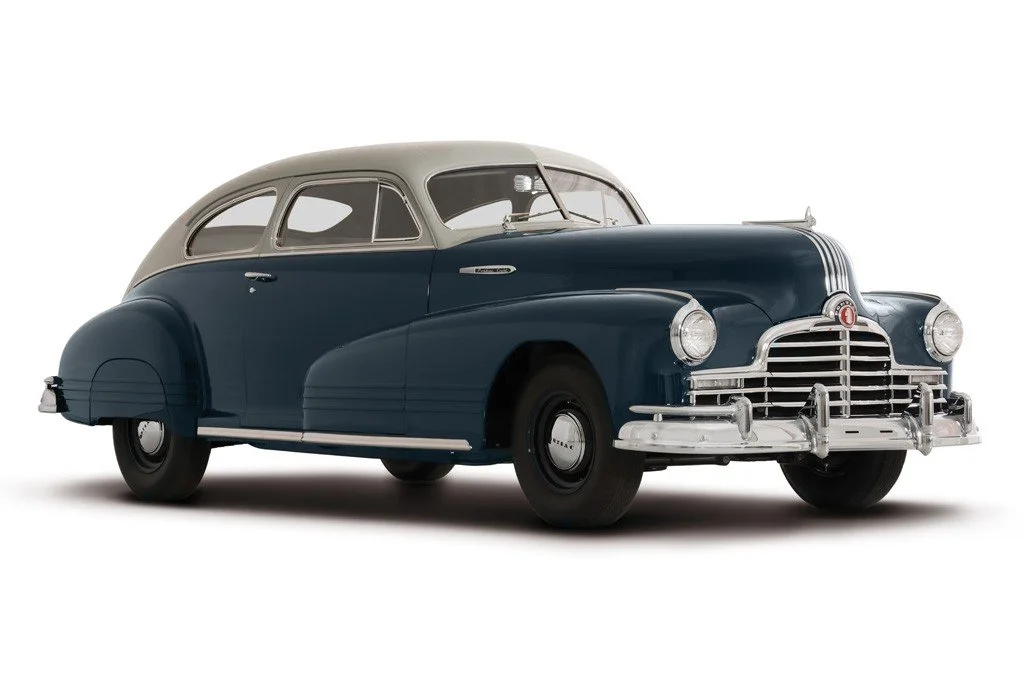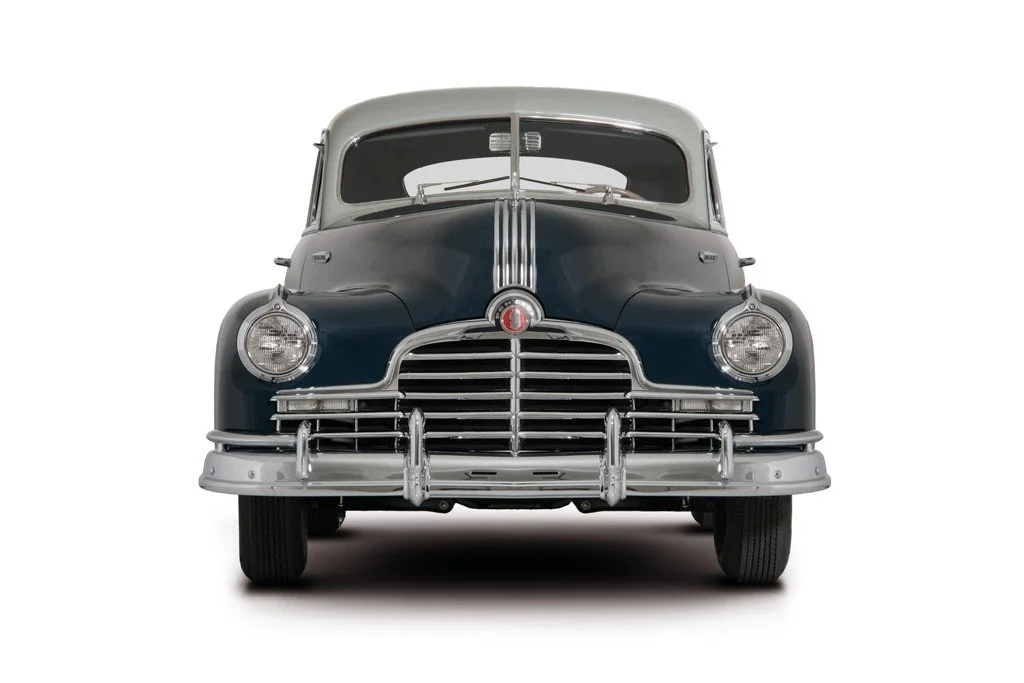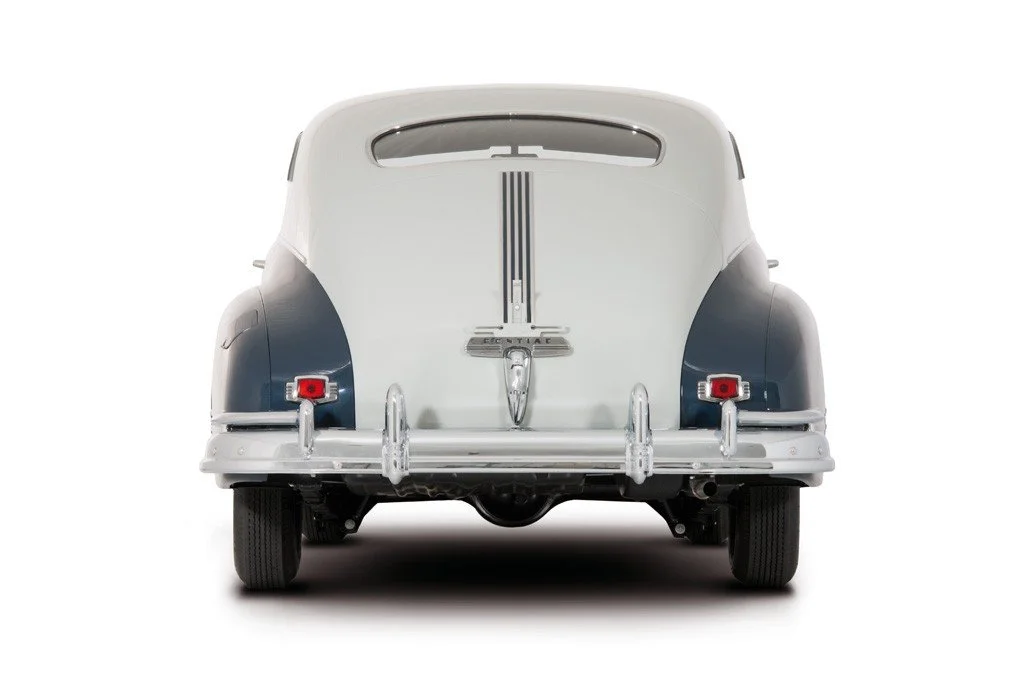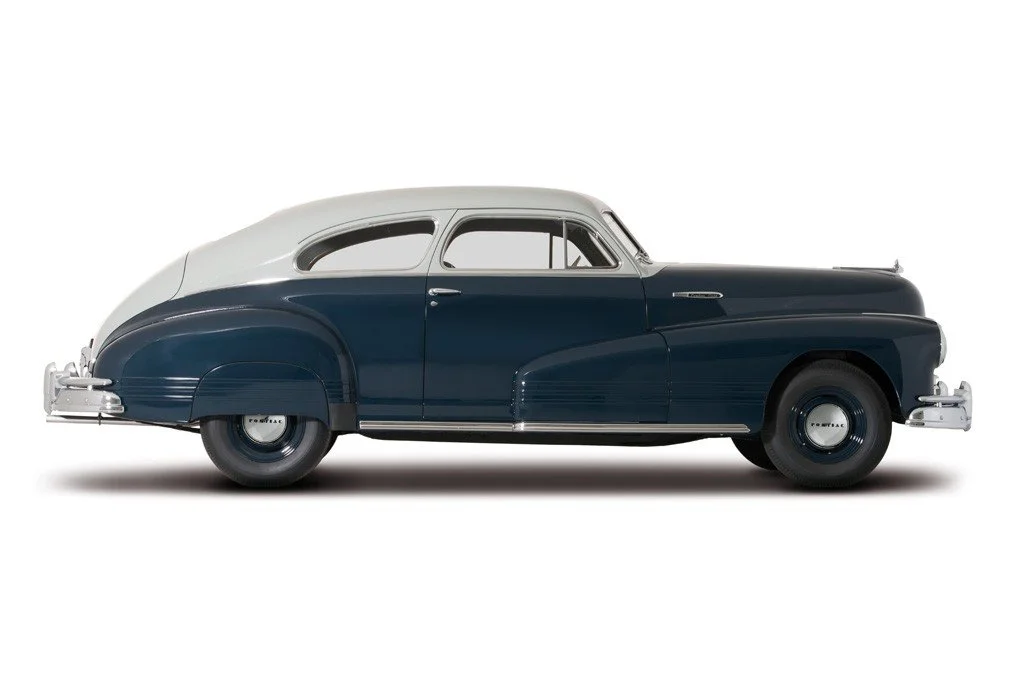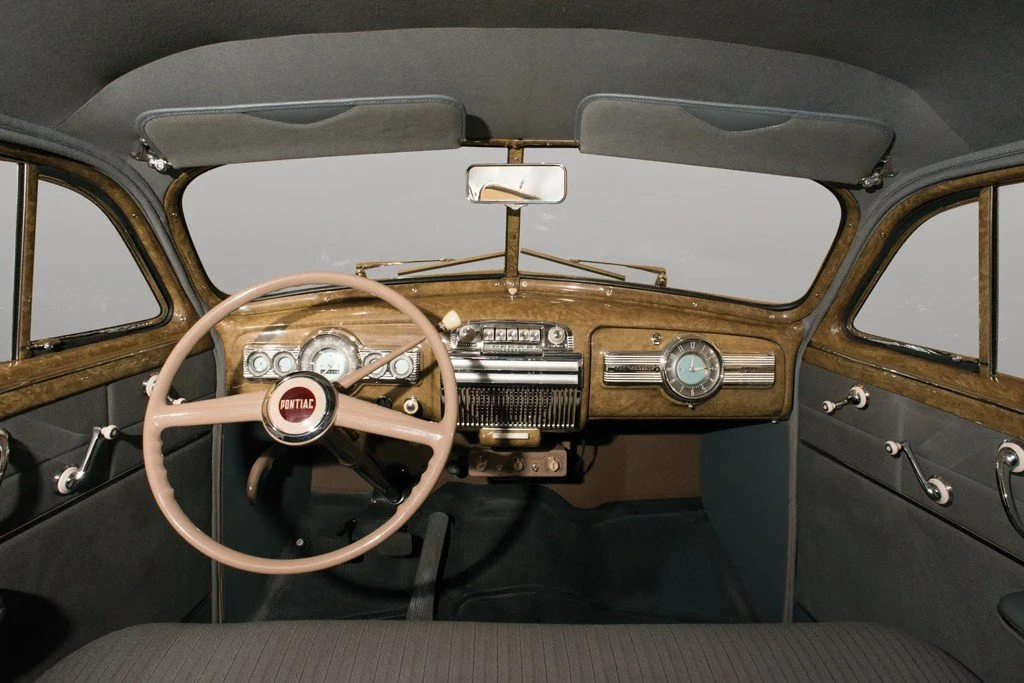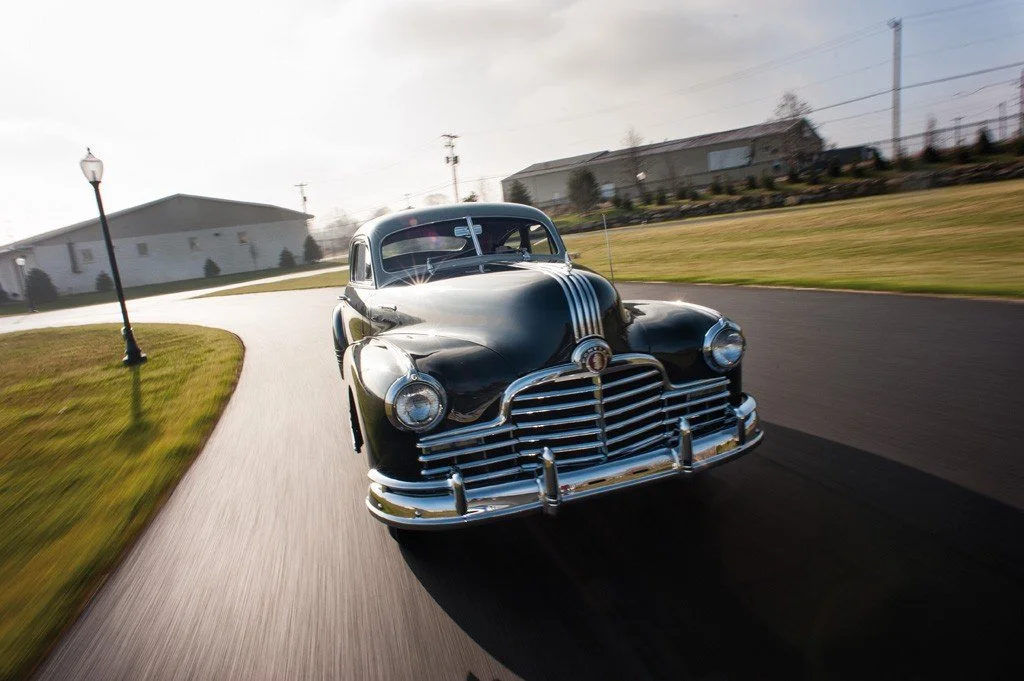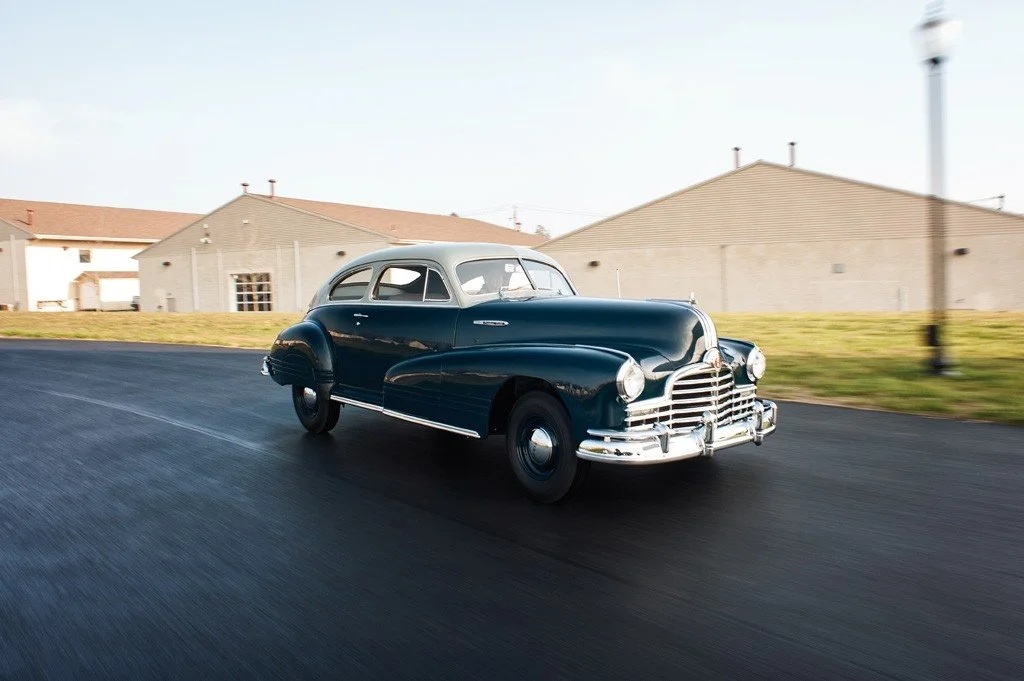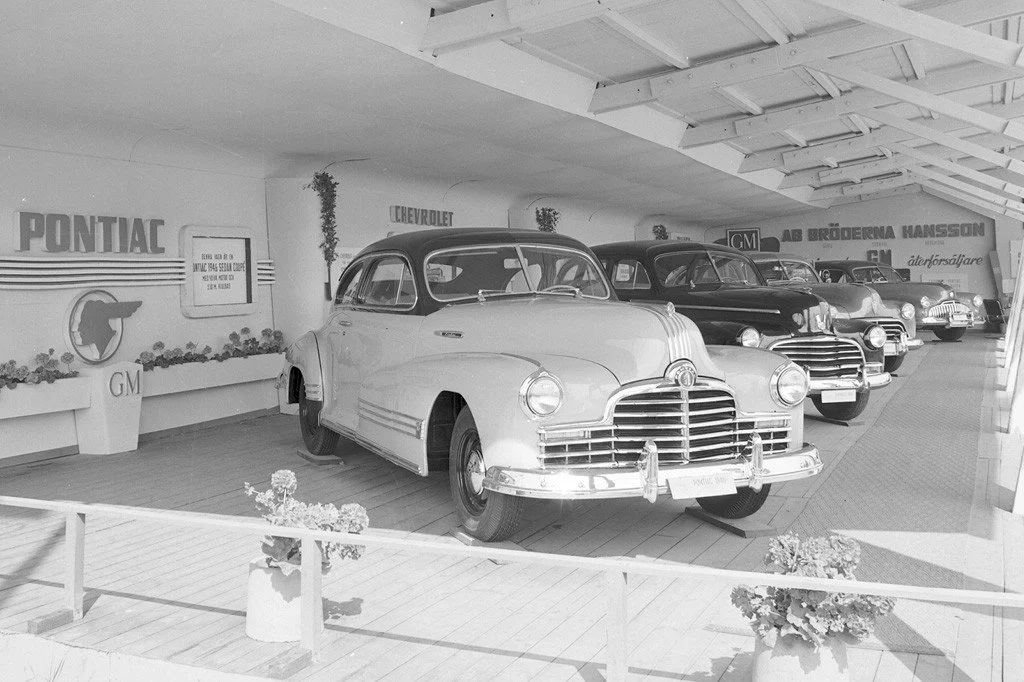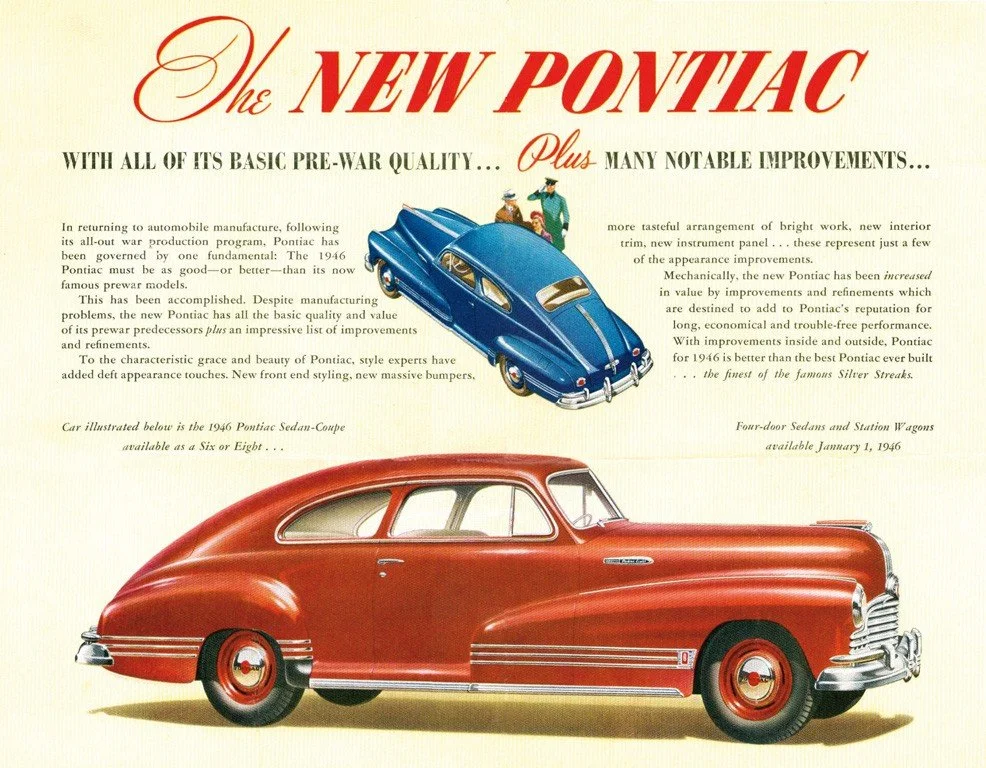-
This 1946 Pontiac Torpedo 8 Sedan Coupe was purchased by the Nicola Bulgari Car Collection from a salvage yard in the western part of the US, as a parts car for a business coupe that was being restored. But a careful examination of the car revealed a basically straight and rust-free body, so it was decided to givethis car a new lease on life. The body was separated from the frame, and everything was redone in a restoration that lasted from 2013 to 2015. The original six-cylinder engine was exchanged for an eight, from another Pontiac of the same age. Of course, all the badging has been updated to represent the new engine. The hot western climate had destroyed all plastic items on the car, like steering wheel and knobs, so these had to be recast. Interior, chrome, paint and mechanicals were completely redone to the highest standards. The results are what Mr Bulgari was expecting, a pleasant driving car that could offer good performance ...and with beautiful styling.
-
Company
General MotorsWheelbase
119inInterior trim
Gray clothBrakes
front and rear drumsMake
PontiacLength
204,6inEngine
inline 8 - 248.9cidTires
6.00x16Model
Sedan Coupe Series 25 LA - Model 2507
Width
80inCarburetor
1 Carter WDO 548SOriginal Price
$1,399Body style
2-door SedanetteWeight
3326lbsHorsepower
103hp @ 3500rpmProduction
26,636Model year
1946Exterior paint
Mariner Blue and SilverwingGrayTransmission
Synchro-shift 3-speed manual -
The Pontiac nameplate was created in 1926 by Alfred P. Sloan jr, president of General Motors Corporation, to fill a large gap in the General Motors hierarchy. The main idea was to sell a high quality six-cylinder car at the price of a four. Sloan’s desire was to have a General Motors car for every purse, and the large 330$ gap between Chevrolet and Oldsmobile had to be filled. The Pontiac name was chosen to recall an Indian chief who led a failed rebellion against the British army. So, on December 28, the first Pontiac rolled out of the manufacturing plants, and was met with huge success, with over 76,000 cars produced in the first year. The engine was a straight six with 186 cubic inches displacement, which could generate 40 horsepower. Sales success continued to be strong until the Wall Street crash in October 1929, when cars remained in the showrooms, unsold. The depression years affected sales of medium price cars very heavily and something had to be done quickly in order to save ailing Pontiac. Alfred Sloan tried to organize the different General Motors Divisions so that they would be a united structure with enough differences between them to give each brand its own identity and personality. The first divisions to be reorganized were Pontiac and Chevrolet; from 1932 onwards they would share the basic bodies and frames, saving millions of dollars in research and development. In a short span of time, all General Motors divisions would share the basic bodies and frames, but each brand would keep its own engines and would be free to have their identities. The huge savings obtained by sharing bodies and frames helped General Motors survive hard times, but in recent years this meant that some divisions could lose their identity, and this brought the closing of Oldsmobile and Pontiac. The “big car” look, the straight-eight engine and the low price combined to ensure very good sales during the thirties.
In 1935 the styling department introduced a feature that would be used for twenty years, a band of stainless steel on the hood that resembled the new streamlined locomotives, and that was called “silver streak”.
When the 1941 model year cars were introduced, Pontiac benefitted greatly from the company policy of body sharing. The smaller car, named DeLuxe Torpedo, used the Chevrolet body. Medium-sized cars were named Streamliner Torpedo, and used the Buick/Oldsmobile B body, while the large Custom Torpedo used the Cadillac body. 1942 would be the last year where new cars could be bought, due to the production stoppage imposed in February by the Government for the war effort.
In 1946 production resumed, but the models were basically the same as before the war. But it didn’t matter, as the buying public was desperate to purchase a new car. Pontiac had a wide selection of models, equipped with six- or eight-cylinder engines, in two levels of trim. Performance was modest, but customers were not overly interested in going fast. Cars were of good quality, made to last over the years with minimum trouble, and pleasant to drive. All this made for very good sales results, with 137,000 cars built in 1946, 230,000 for 1947 and 245,000 for 1948.

